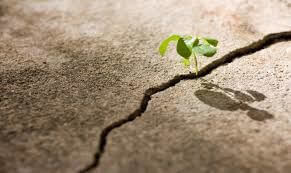Driveway Maintenance
Congratulations on your new Concrete!
Now that your pour is complete, we have a few handy tips to reduce the risk of surface cracking and damage to your driveway.
Day after pour:
- You may walk on the concrete with socks, do not slide your feet and take care not to drop anything when carrying items such as shopping over the concrete area.
- Water the concrete over the next three (3) days; same as you would plants, no direct pressure.... you will notice the water being absorbed into the surface. Be generous as this will assist in the concrete curing process.
- Best time to water is early in the morning and evening; as thermal evaporation is restricted.
- Driveways 2U takes care to minimise the risk of cracking; however, Shrinkage and non structural cracking may occur, these are treated on a case-by-case basis.
- Standard Vehicles may drive on the driveway after seven (7) days; it is not recommended that heavy vehicles or trucks access the driveway for at least twenty one (21) days. Concrete reaches its designed strength at twenty eight (28) days, following this time period the concrete continues to gain in strength.
Following colour seal:
- Concrete sealer can be walked on after twenty four (24) hours and driven on following seventy two (72) hours following application of sealer.
Call us on 02 9988 0903 between the hours of 9am-3pm for any questions or support.
Vehicle & Pedestrian TrafficEach site's foundations vary, as will weather conditions so it is of upmost importance that clients seek advice regarding the timeframe in which the driveway will be ready for vehicle and pedestrian traffic. Generally we advise concrete can be walked on after 24 hours but a minimum of 7 days is required for any vehicle traffic and 28 for heavy vehicle traffic (any trucks, buses, caravans, trailers or commercial vehicles). All vehicles should avoid parking or driving within 300mm of an edge to minimise concrete cracking. * The edges of concrete paving are the most susceptible to cracking or failure. | Preventing Fading & StainingSealing of any paved area is highly recommended to minimise fading, staining and cracking. To remove a stain advice should be sought as to what product and method application should be used. Driveways 2U recommends trialing any stain removal product on a small area of concrete to test for reaction or further staining. |
Cracking & DamageCracking in concrete is somewhat controlled by "Control Joints". These are more flexible join areas are designed to attract cracking and in turn prevent cracking to the general paved surface. A good sealant sprayed whilst the concrete is drying will significantly reduce the chance of any cracking. Due to the nature of concrete as a material and recent drought conditions, standards stipulate tolerances for concrete paving to crack. These cracks are commonly known as "hairline cracks". Varying weather conditions (wet & dry) will cause each building site's foundation to react. Those with reactive foundations (Class S, M, H, P or E) should expect hairline cracks in varying weather conditions. Do not try to repair any damaged or cracked concrete. In the event of cracks greater than 2.5mm wide, the client should contact Driveways 2U for review. | PlantingsTrees or plants with significant root systems should be kept well clear of concrete paving or slabs. * Any tree or plant should not be planted within the (tree/plants) mature height x 1.5. (i.e. A 4 metre high tree should not be planted within 6 metres)
|
General CareOnce the driveway has cured it is important to follow general care practices. The information above is advisory. It is provided in good faith and not claimed to be an exhaustive treatment of the relevant subject. Further professional advice needs to be obtained before taking any action based on the information provided. For any further advice contact Driveways2u The CSRIO publication (BFT 18) "Foundation Maintenance and Footing Performance: A Homeowner Guide" is relevant in part to a paved concrete areas and more specifically the care of your home site's footings & foundation. Please refer to your copy supplied by your builder. | How to A Clean Concrete Driveway?Cleaning the concrete driveway is easier than other driveways. Follow the steps below for cleaning concrete driveways –
|

